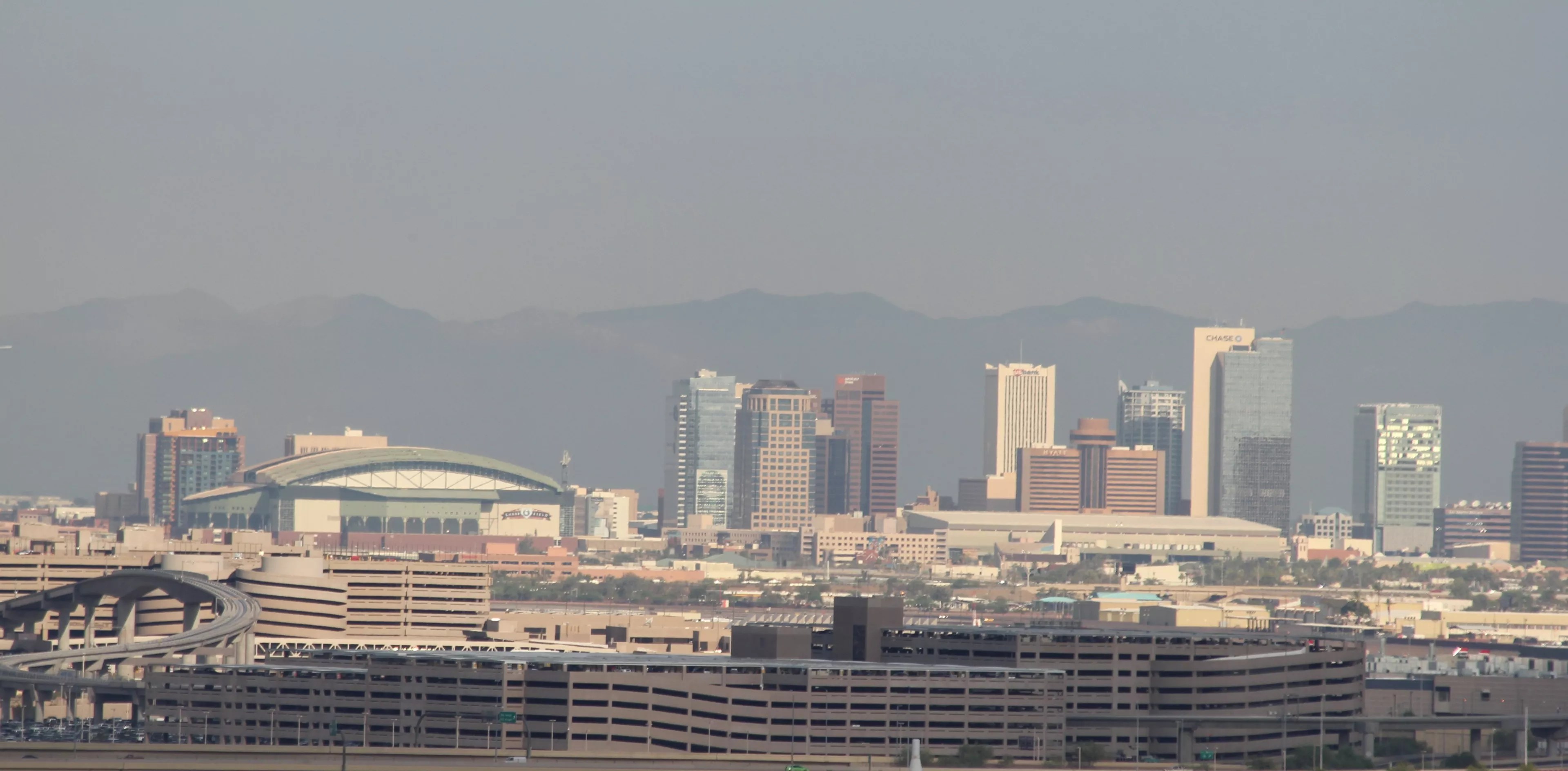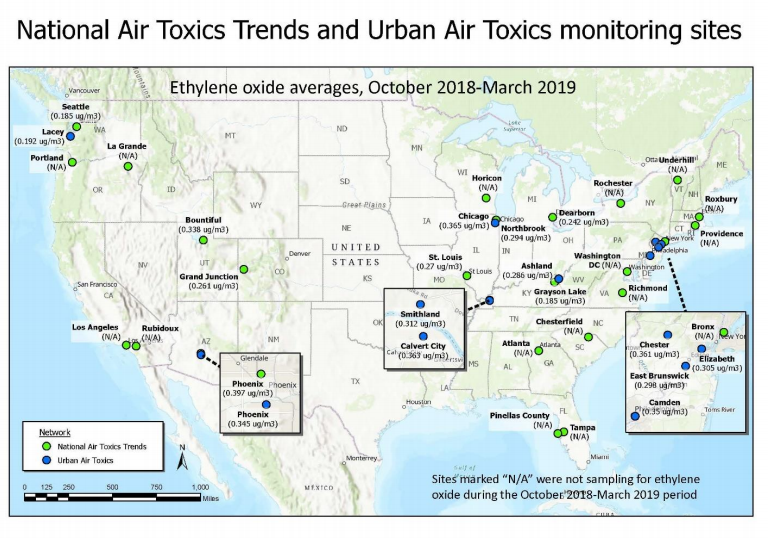

Audio By Carbonatix
New data from the Environmental Protection Agency indicate that concentrations of ethylene oxide, a colorless and carcinogenic gas, are higher in Phoenix than anywhere else in the country.
The data, released Wednesday, came from 18 air quality monitoring stations in nine states across the country, from Seattle to St. Louis to Camden, New Jersey.
Phoenix, whose notoriously hazy air already fails to meet certain federal air-quality standards, was the lone city represented twice on that list.
One of those stations, located south of Camelback Road and east of Interstate 17, topped the list, with 0.397 micrograms of ethylene oxide per cubic meter of air. The other, located in south Phoenix at Central Avenue and Broadway Road, clocked in at 0.345 micrograms per cubic meter.
Both measured well above the national average of 0.297 micrograms of ethylene oxide per cubic meter.
Ethylene oxide is an industrial compound most commonly used to produce other chemicals, like antifreeze. It can also be a pesticide, a sterilizing agent (in lieu of steam) for items like medical instruments and beekeeping equipment, or a fumigating agent in spices.
The numbers represent six-month averages from October 2018 to March 2019, and so the ability to draw conclusions and extrapolate from them is limited.
The EPA has said that those levels fall well below concentrations that can cause immediate health effects. The long-term consequences are less clear, the agency admits.
Cities whose air contained levels of ethylene oxide similar to those in Phoenix were Chicago (0.365); Calvert City, Kentucky (0.363); and Chester, New Jersey (0.361).
Grayson Lake, Kentucky, and Seattle tied for the lowest concentration of the cancer-causing gas, at 0.185 micrograms per cubic meter.
The EPA released the data as part of ongoing efforts to reduce hazardous air pollutants from “miscellaneous organic chemicals,” including cutting certain ethylene oxide emissions by 93 percent, the agency said. It had evaluated the risks posed by this group of chemicals, it added, and it found them to be “unacceptable.”

Phoenix had the highest level of ethylene oxide of 18 sampling sites across the U.S.
EPA
The agency is not monitoring for the precise source of these pollutants.
“We believe that there is no immediate, short-term risk from the levels of ethylene oxide found in these limited air monitoring data,” it said in a news release. “There is a need to better understand low levels of ethylene oxide over a longer-term period.”
Andrew Wheeler, the top EPA official and a former lobbyist for the coal industry, said in a statement that the “EPA’s actions underscore the Trump Administration’s commitment to addressing and reducing hazardous air pollutants, including ethylene oxide emissions, across the country.”
The administration’s move to curb a carcinogenic gas that many of us have never heard of comes as it rolls back federal regulations for clean water and eases rules on coal pollution and toxic coal ash, amid a broader effort to loosen 85 different environmental protections.
In recent years, EPA has gradually paid more attention to ethylene oxide.
In 2016, it upgraded a risk value that prompted the agency, in August 2018, to conclude that several areas in the United States might have higher risks of cancer because of long-term exposure to the chemical. As a result, it said it would begin to measure ethylene oxide in 34 air-monitoring stations, including the 18 sites from which it gathered the initial data
According to the National Cancer Institute, ethylene oxide smells slightly sweet, and people – typically those who live or work in or near industrial facilities – are most commonly exposed to it when they inhale or ingest it.
When inhaled, ethylene oxide is carcinogenic, the EPA has concluded. The higher the concentration of ethylene oxide in the air, the higher a person’s risk of developing cancer.
Based on the agency’s calculations, the ethylene oxide concentrations in Phoenix, as well as that of the 16 other cities it took samples from, exceed the threshold “at or below which no adverse health effect is anticipated” for a lifetime of exposure.
Erin Jordan, a spokesperson for the Arizona Department of Environmental Quality, said that the department and the Maricopa County Air Quality Department were aware of the data, and that ADEQ had reviewed a list of facilities that received air-quality permits from the county that also emitted ethylene oxide.
“The data indicate there were no facilities in close proximity to our two monitoring sites,” Jordan said.
She said both agencies were working with EPA to better understand the data, and she reiterated the federal agency’s statement that the concentrations it measured “are well below levels that are linked to immediate health effects.”
“The monitors will remain in place and the EPA will continue to analyze the data to help States and other local air quality agencies gain a better understanding of potential impacts to public health,” Jordan said.